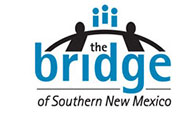Close It Summit Promotes New Approaches to Closing Workforce Gaps
Originally published in the Las Cruces Sun-News on Monday, November 4, 2019
Closing the gaps between people and careers, educators and employers, adult workers and college credentials, high school students and career preparation, and children of color and 21st Century careers were all addressed at the Close It Summit, hosted by New Mexico-based Innovate+Educate.
National leaders from K-12 education, higher education, workforce boards, and nonprofits traveled to Santa Fe to discuss the critical need to close persistent talent, skills, and interest gaps in the nation’s workforce.
The Bridge of Southern New Mexico’s efforts in partnership with the Workforce Talent Collaborative were highlighted as a best practice at the conference. Beyond that, even the conversations amongst thought-leaders paralleled and confirmed the work underway in our community.
The only difference between them and us is the holistic nature of our work. We are doing it all at the same time – literally sparking change across all members of the talent development continuum. Each of our cross-sector partners knows they have a role to play and must play it in coordination with one another.
We are absolutely on the right track. Collaboration is what sets us apart. And it’s what ensures we’ll be successful.
That said, there were also several conversations that captured lessons we should embrace as we move forward:
Higher education must adapt to meeting the “right skills, right knowledge, right now” needs of employers to better serve its students.
- Colleges and universities that thrive are driven by strong industry partnerships. A report recently showed only 11% of employers feel college graduates are well prepared for work, while 98% of college faculty do. The voice and participation of industry can close these gaps.
- Students receive the greatest economic benefit for their education investments when industry-valued credentials are embedded into two- and four-year degree paths. Reverse transfer of associate degrees on the way toward four-year degrees can provide working students a tremendous boost in their earning potential while in school.
- The college student body is growing in its composition of “learning workers,” those over the age of 25, work full time, parenting, and therefore have very different needs.
- While college credentials at some level are virtually required for success in 21st Century jobs, the return on investment for the rising cost of college is leading prospective talent to believe it’s simply not worth it, as student debt in our country rises to historic rates.
- Higher education institutions are building innovation into their faculty by hiring those who are “entrepreneurially minded” and willing to break out of traditional models.
Workforce boards (those who oversee the distribution of Workforce Innovation and Opportunity Act resources) are innovating to better respond to the needs of their job seekers and businesses:
- Family-centered design can accelerate success for clients and their families (and therefore success metrics of the boards). Bringing Head Start representatives into Workforce Centers helps parents seeking employment connect their children with high-quality pre-kindergarten education.
- Training staff on family-centered design puts the wisdom of families at the forefront of knowing what they need and building their capacity for self-efficacy.
- Families need more than a job. They need help with childcare costs, transportation, emergency financial assistance, and other services not provided within the WIOA system. Building strong relationships with non-profits and other agencies across a community can provide better counseling, wrap-around services, and greater likelihood of long-term family success (and better metrics for the boards).
- Strong partnerships with high-wage, high-skilled employers ensures WIOA dollars are better able to achieve their intended economic impact.
The Close It Summit confirmed everything we already know…success in workforce development demands we do things differently and in partnership with one another.
Economic transformation for individuals, families, and our community rides on our willingness to embrace this change and chart new and better ways to partner and invest the dollars we already have to create the outcomes we all want to achieve.

